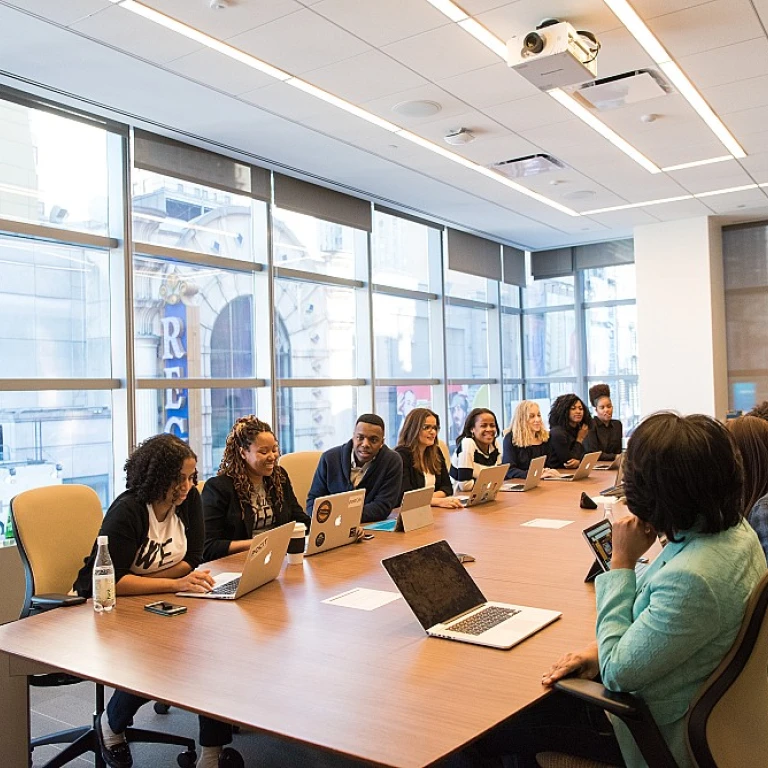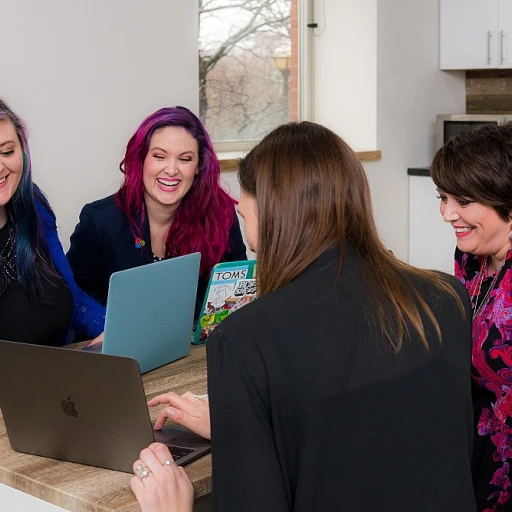Understanding Organizational Culture Inventory
Decoding the Organizational Culture Inventory
The Organizational Culture Inventory (OCI) is a powerful tool designed to provide a deep insight into the cultural fabric of organizations. Developed by Human Synergistics, the OCI plays a pivotal role in understanding and assessing the behavioral norms and expectations that define the workplace culture.
In essence, the culture inventory serves as a barometer, gauging the current state of an organization's cultural environment. It helps illuminate the underlying assumptions, values, and ideals that guide employees' behaviors and organizational practices.
OCI assessments take into account various dimensions and offer a detailed picture of the cultural landscape. By analyzing these, organizations can identify and align their leadership development programs with cultural goals. It encourages a nuanced approach, integrating cultural awareness into leadership pathways.
Whether it's in health care or a corporate environment, an effective cultural and leadership assessment can chart the course for cultural change and increased organizational effectiveness. Understanding the OCI enables executive teams to reflect on the competing values framework and target the preferred culture that maximizes performance and employee engagement.
Leadership development, when aligned with cultural goals identified through the OCI, becomes not just about individual leaders' growth but also about fostering an inclusive, engaging, and effective workplace culture. Integrating such assessments ensures long-term benefits, improving not only the organizational ideal culture but also the collective performance of the team members.
The Role of Culture in Leadership Development
The Intersection of Culture and Leadership
Understanding the intricate link between organizational culture and leadership development is pivotal in today’s evolving corporate landscape. A robust culture provides the framework for the values, beliefs, and norms that define how individuals within an organization operate. These cultural foundations profoundly impact leadership styles and effectiveness.
Every organization possesses a unique cultural footprint, often deciphered through tools like the Organizational Culture Inventory (OCI). Such assessments offer insights into the existing culture and highlight areas that may require transformation. The culture within a company is not just a backdrop; it actively shapes leadership development by influencing how leaders are perceived, how they react to challenges, and how they inspire their teams.
Adapting to Cultural Shifts
Effectively adapting leadership strategies to align with the existing culture—or the desired cultural change—is crucial. Leadership development programs must consider the cultural dynamics to resonate with and be impactful for team members. When leaders understand and embrace the organizational culture, they can enhance employee engagement and drive performance.
A culture assessment reveals aspects of the current culture that support or hinder leadership development. Identifying the behavioral norms and values within organizations allows for a tailored approach that aligns leadership strategies with the preferred culture. This alignment can pave the way for long-term cultural change and organizational effectiveness.
By integrating cultural understanding into leadership development, organizations maximize their potential for success. Such alignment ensures that leaders not only meet their personal growth goals but also contribute to broader organizational objectives, bolstering the entire team’s performance along the way.
Assessing Your Organization's Culture
Key Strategies for Conducting Culture Assessments
The assessment of your organization's culture is a pivotal step in understanding the existing environment that influences leadership development. Organizations can benefit significantly from conducting an Organizational Culture Inventory (OCI) assessment, which provides deep insights into the characteristics and effectiveness of their current culture. This assessment serves as a foundation on which to build a more aligned leadership development strategy.
To begin, recognize the importance of assessing both the current and ideal culture within your organization. This dual-focus enables you to identify gaps that may exist between where your culture currently stands and where it ideally should be for maximum organizational effectiveness and employee engagement.
Here are some essential elements of a comprehensive culture assessment process:
- Diversifying Feedback Sources: Engage employees from different hierarchical levels and departments to gather a holistic view of your cultural landscape. This brings to light various perspectives on norms, values, and the corporate culture as experienced by team members.
- Utilizing Standardized Tools: Implement established tools like the culture inventory OCI, which employs both qualitative and quantitative data to deliver actionable insights into organizational culture and organizational effectiveness.
- Conducting Surveys and Interviews: Use organizational surveys and one-on-one interviews to capture subjective data about employee perceptions of the workplace culture. These methods reveal the cultural values and behavioral norms that are prevalent across the organization.
- Analyzing Competing Values Framework: Graphically represent competing values within the organizational culture to better understand challenges and areas that require change initiatives.
Once you've gathered and analyzed the data, consider leveraging tools such as the Competing Values Framework to further explore cultural dynamics. Human synergistics recommend framing the results from these assessments into actionable strategies that align leadership development with desired cultural attributes. By doing so, organizations can foster a preferred culture that enhances employee engagement and supports long-term performance goals.
Moreover, for those keen on boosting employee engagement, you might find valuable insights in crafting effective employee engagement phrases by visiting
this comprehensive guide.
Ultimately, effective culture assessment is not just about identifying what the culture is today but mapping a path toward what it should be tomorrow, ensuring that leadership development efforts are well-informed and culturally aligned.
Aligning Leadership Development with Cultural Goals
Bridging Leadership Strategies with Cultural Aspirations
In the realm of effective leadership development, aligning your program with the cultural aspirations of your organization is paramount. This alignment is a critical aspect, as it ensures that every leadership initiative resonates with organizational values and brings tangible benefits to employees and the organization alike.
One effective strategy to achieve this alignment is by deploying the Organizational Culture Inventory (OCI) as a foundational tool. By assessing the current state of your organization's culture, as previously discussed, you gain invaluable insights into both the prevailing and preferred cultural norms.
Consider the following steps in your leadership approach:
- Cultural Assessment Integration: Incorporate findings from the OCI into your leadership development framework. Using these insights will help shape strategies that typically address areas needing improvement and build upon positive aspects of the existing culture.
- Values-driven Leadership: Develop leadership programs that champion your organizational values framework. Leaders become ambassadors, advocating and exemplifying cultural values, significantly boosting employee engagement and organizational effectiveness.
- Behavioral Norm Reinforcement: Instill in leadership initiatives the importance of reinforcing the desired behavioral norms. Programs should cultivate skills and mindsets that mirror the ideal culture projected in the OCI assessment, ensuring a consistent message throughout the organization.
- Cultivating Long-term Change: Fostering a culture change isn't an overnight endeavor. Focus on strategies that are sustainable over the long term. Ensuring leadership effectively steers this transformation can bolster organizational performance significantly.
- Engaging with Organizational Goals: Leadership development should propel organizational goals forward. By aligning cultural objectives with leadership goals, organizations ensure that every leader is not only competent but also a driving force for change, shaping a robust, cohesive corporate culture.
While challenges and considerations will inevitably arise, as highlighted in other sections, an integrated approach that ties leadership effectiveness directly to preferred organizational culture will considerably amplify your leadership development success.
Case Studies: Success Stories
Learning from Success: Real-Life Transformations
It's not every day that you come across organizational success stories that highlight both leadership growth and cultural evolution. But when these stories do surface, they provide rich material for learning. Organizations that have embedded the Organizational Culture Inventory (OCI) into their strategy often serve as exemplary models.
One such organization, a prominent player in health care, demonstrated how a shift towards a more "ideal culture" can precipitate positive results. Undergoing a culture assessment revealed discrepancies between their current culture and the preferred culture they aspired to achieve. With a focus on cultivating quality and effectiveness, the organization redefined leadership expectations to align with these cultural goals.
Another success story comes from a corporate entity in the tech industry. They faced challenges with employee engagement due to competing values within their organizational structure. Leaders leveraged the insights from the OCI to implement targeted leadership development programs. As a result, they saw a marked improvement in team collaboration and overall performance. Behavioral norms shifted gradually towards more constructive and human-centered working relationships.
Engaging in comprehensive cultural assessments helped these organizations identify areas needing change. This, in turn, informed their leadership development initiatives, fostering a culture where employees could thrive.
Both cases highlight the crucial role of aligning organizational culture with leadership development. It illustrates that a commitment to embracing change and nurturing human synergistics can lead to long-term enhancements in organizational effectiveness and employee satisfaction. In summary, aligning leadership initiatives with cultural goals isn’t just an idealistic aspiration; it's a strategic necessity for achieving sustainable success.
Challenges and Considerations
Overcoming Obstacles in Merging Leadership Initiatives with Organizational Culture
Developing leadership in alignment with an organization's cultural goals can be fraught with challenges. As exciting as it might be to pursue an ideal culture, there are multifaceted aspects to consider.
- Resistance to Change: Implementing assessments like the Organizational Culture Inventory (OCI) may reveal deep-seated barriers rooted in the current cultural norms. Employees often fear changes, especially when shifting toward a transformational corporate culture. It takes strategic planning to gently guide teams through this transition with minimal disruption.
- Diverse Perceptions of "Ideal Culture": Organizations consist of individuals with varying perceptions of what the "ideal culture" should look like. Reaching consensus on cultural and organizational values can present a significant hurdle. Leadership must therefore cultivate open dialogue to balance competing values and nurture a cohesive vision.
- Resource Allocation: Alignment of leadership development programs with cultural objectives requires considerable resources. Organizations must not only conduct thorough culture assessments but also ensure sufficient support during the culture change process. Prioritizing resource allocation is essential to achieve long-term organizational effectiveness.
- Ensuring Consistent Engagement: Employee engagement is paramount when steering cultural change, yet it can be challenging to maintain consistently. Regular communication and tangible touchpoints within the workplace culture help in reinforcing commitment to cultural shifts and leadership endeavors.
In tackling these challenges, organizations must remain flexible, constantly reassessing their approach and benchmarks. Understanding and anticipating these considerations allows for more effective leadership development in tandem with cultural enhancement.













